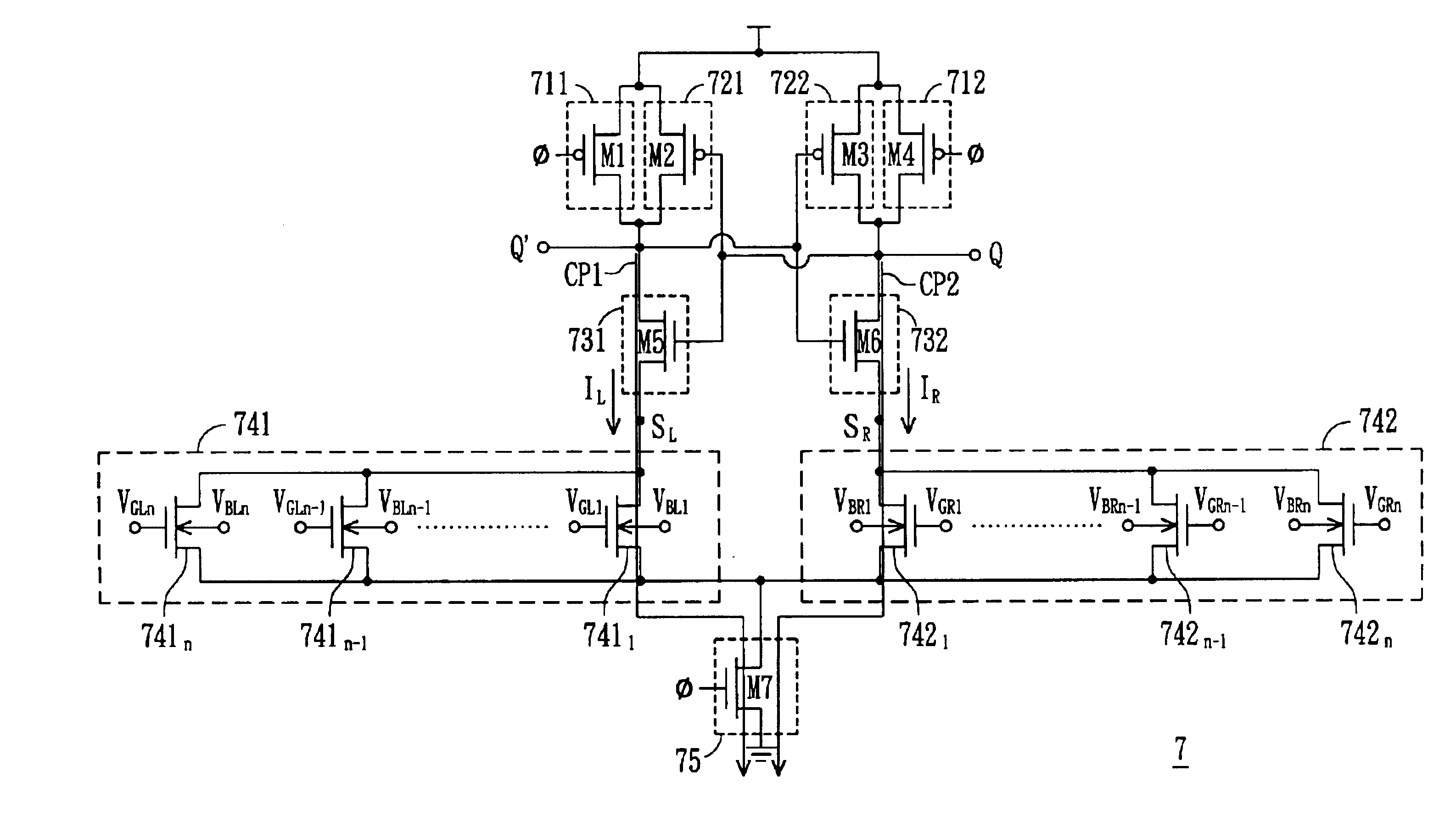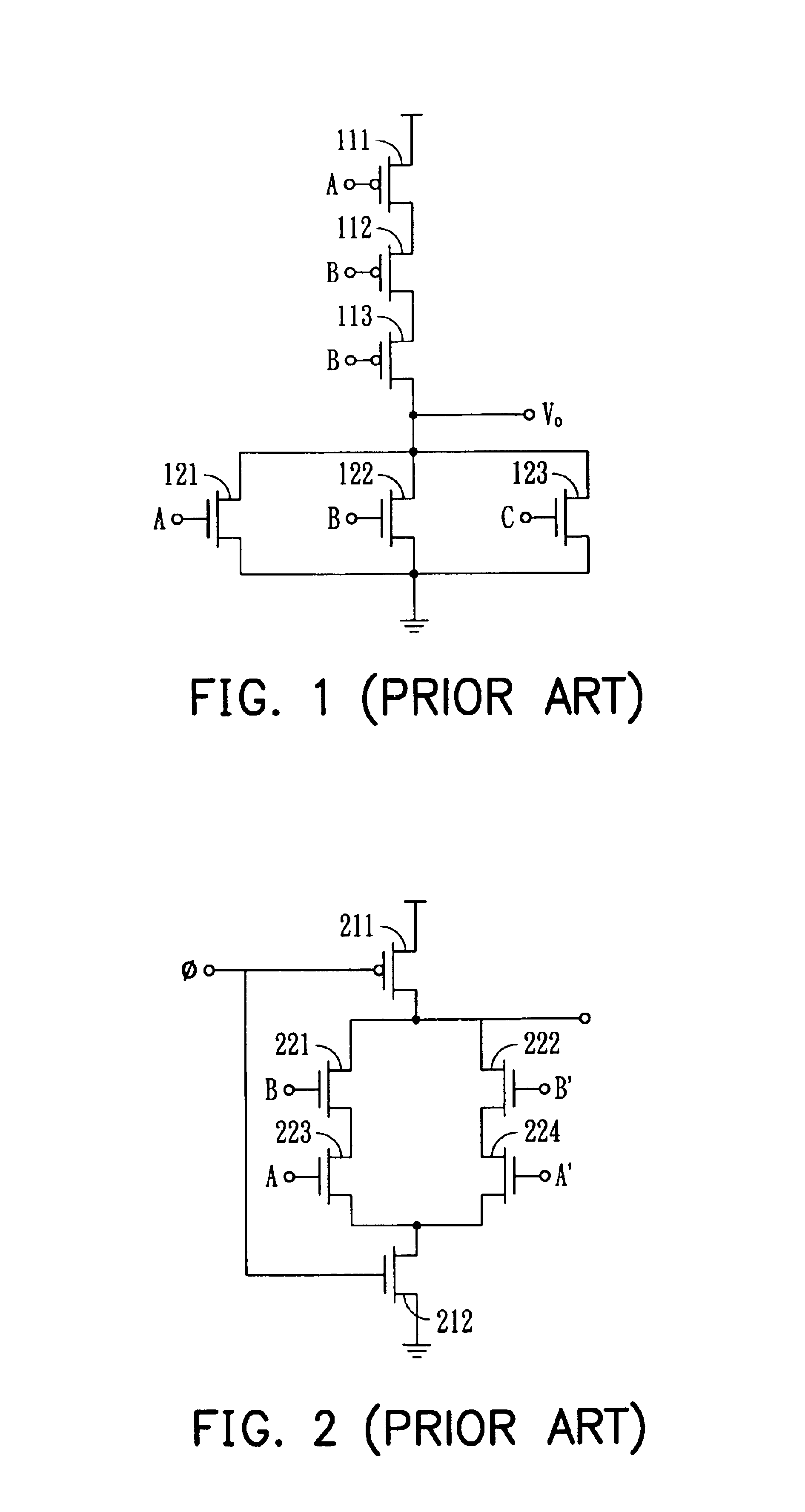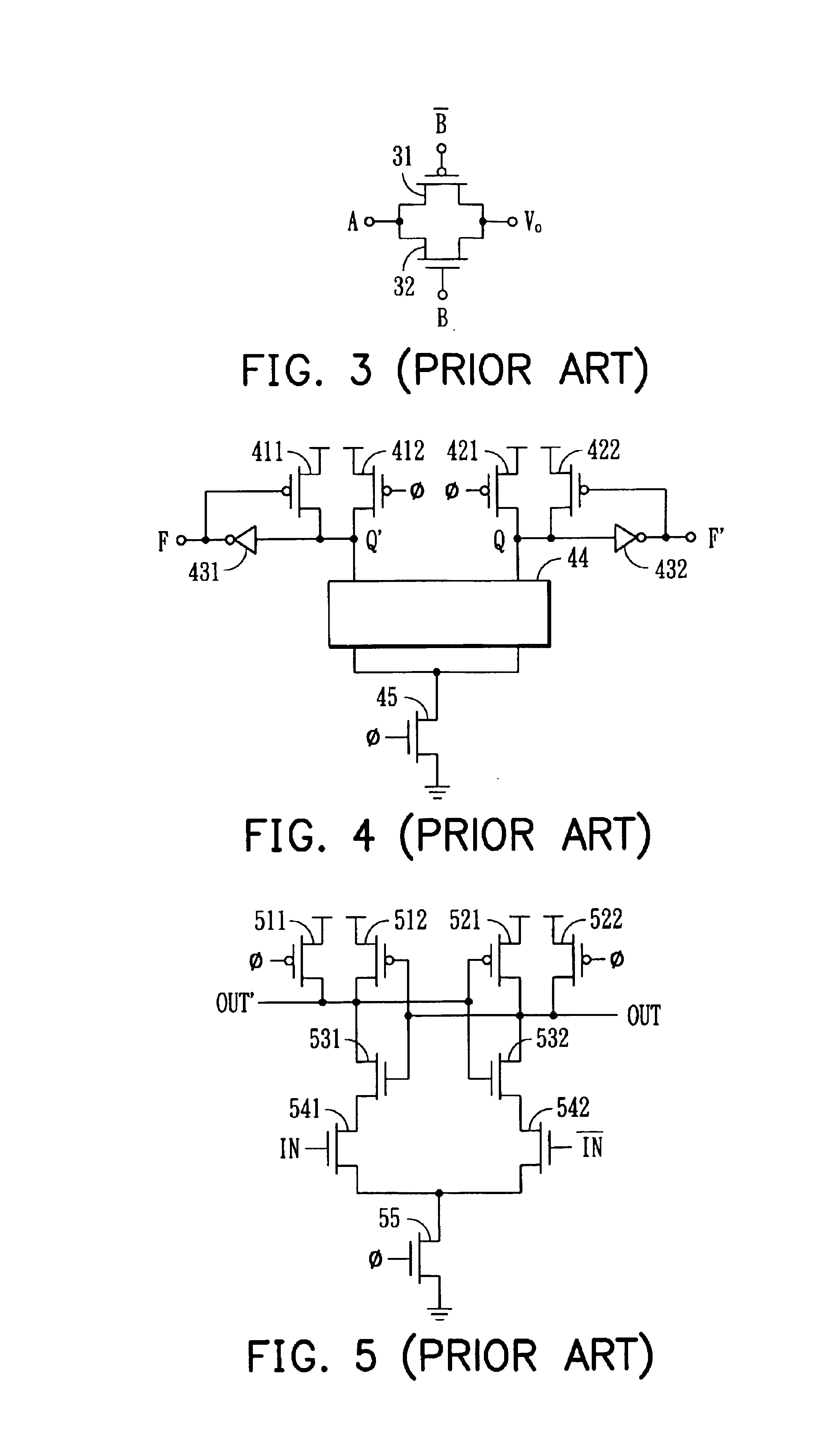Bulk input differential logic circuit
- Summary
- Abstract
- Description
- Claims
- Application Information
AI Technical Summary
Benefits of technology
Problems solved by technology
Method used
Image
Examples
first embodiment
FIG. 7 is a diagram showing a bulk input differential logic circuit according to the invention. Two current paths CP1 and CP2 are formed in the bulk input differential logic circuit 7. The current paths CP1 and CP2 are respectively connected between terminals Q and Q′, and the ground. The bulk input differential logic circuit 7 includes seven switches 711, 712, 721, 722, 731, 732 and 75, and two NMOS logic circuit 741 and 742. The switch 731, NMOS logic circuit 741 and switch 75 form the current path CP1 while the switch 732, NMOS logic circuit 742 and switch 75 form the current path CP2. The terminals Q and Q′ are respectively between the switches 721 and 731, and the switches 722 and 732.
Both of the switches 711 and 712 are controlled by a clock signal φ. They are opened when the clock signal φ is at a logic High and are closed when the clock signal φ is at a logic Low. The switches 711 and 712 are composed of P-type transistors M1 and M4 having gates coupled to receive the clock ...
second embodiment
FIG. 14A is a diagram showing a bulk input differential logic circuit according to the invention. The bulk input differential logic circuit includes four P-type transistors 151, 152, 155 and 156, five N-type transistors 153, 157, 159, 1581 and 1541, and a boost circuit composed of transistors 91 and 101. The P-type transistors 151, 152 have drains commonly coupled to receive the logic High voltage, sources commonly coupled to the terminal Q′, and gates respectively coupled to receive a clock signal φ and the terminal Q. The P-type transistors 155 and 156 have drains commonly coupled to receive the logic High voltage, sources commonly coupled to the terminal Q, and gates respectively coupled to the terminal Q and to receive the clock signal φ. The N-type transistors 153 and 157 have drains respectively coupled to the terminal Q′ and Q, and gates respectively coupled to the terminals Q and Q′. The N-type transistor 1541 has a drain coupled to the source of the N-type transistor 153, a...
third embodiment
FIG. 15A is a diagram showing a bulk input differential logic circuit according to the invention. The bulk input differential logic circuit includes four P-type transistors 161, 162, 165 and 166, six N-type transistors 163, 167, 169, 1681, 1641 and 1642, and a boost circuit composed of transistors 91 and 101. It is noted that the circuit shown in FIG. 15A is similar to that in FIG. 14A except that the circuit in FIG. 15A has the transistors 1641 and 1642 receiving the input signals A, A′, B and B′.
FIG. 15B shows a truth table of the bulk input logic circuit in FIG. 15A. Therefrom, the bulk input logic circuit in FIG. 15A implements XOR operation of the signals A and B.
PUM
 Login to View More
Login to View More Abstract
Description
Claims
Application Information
 Login to View More
Login to View More - R&D
- Intellectual Property
- Life Sciences
- Materials
- Tech Scout
- Unparalleled Data Quality
- Higher Quality Content
- 60% Fewer Hallucinations
Browse by: Latest US Patents, China's latest patents, Technical Efficacy Thesaurus, Application Domain, Technology Topic, Popular Technical Reports.
© 2025 PatSnap. All rights reserved.Legal|Privacy policy|Modern Slavery Act Transparency Statement|Sitemap|About US| Contact US: help@patsnap.com



